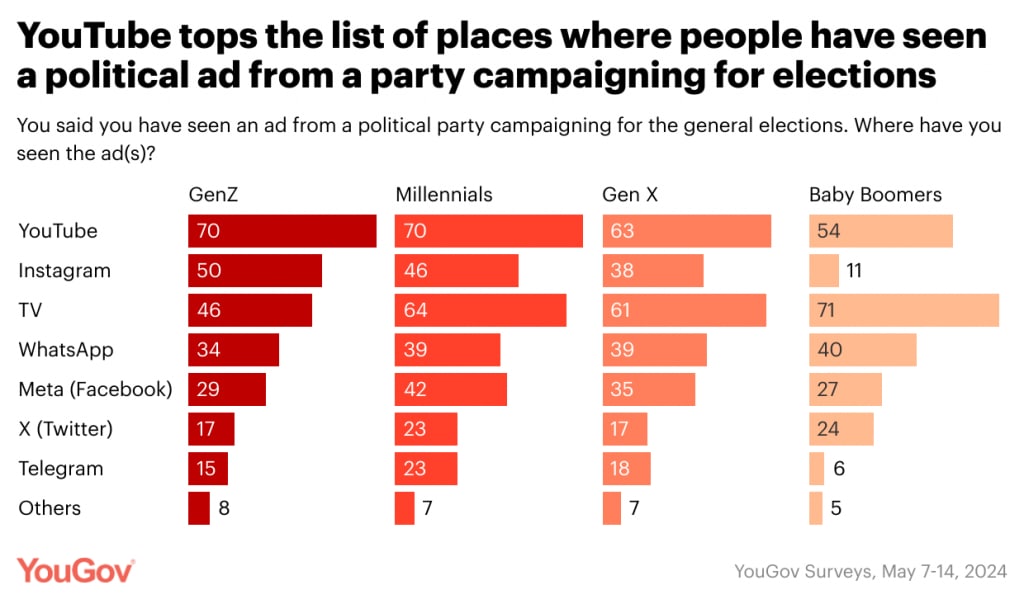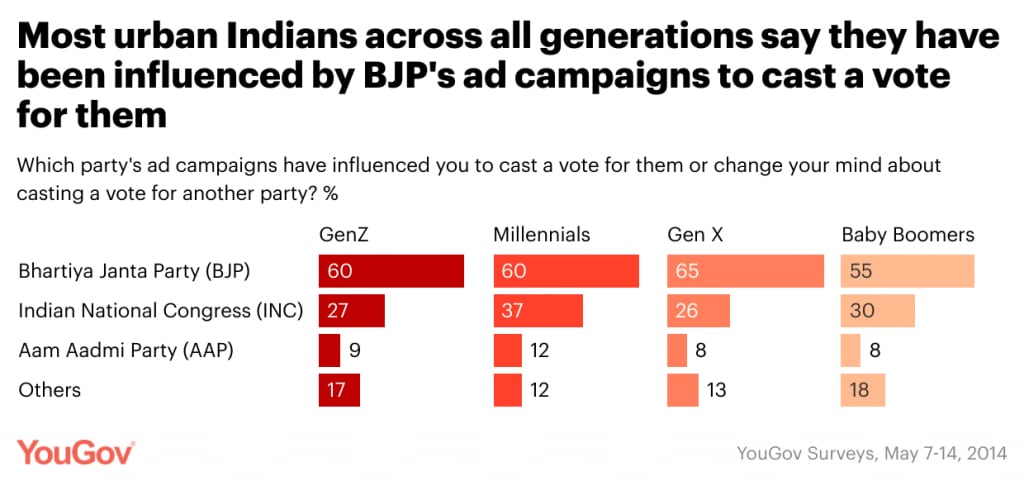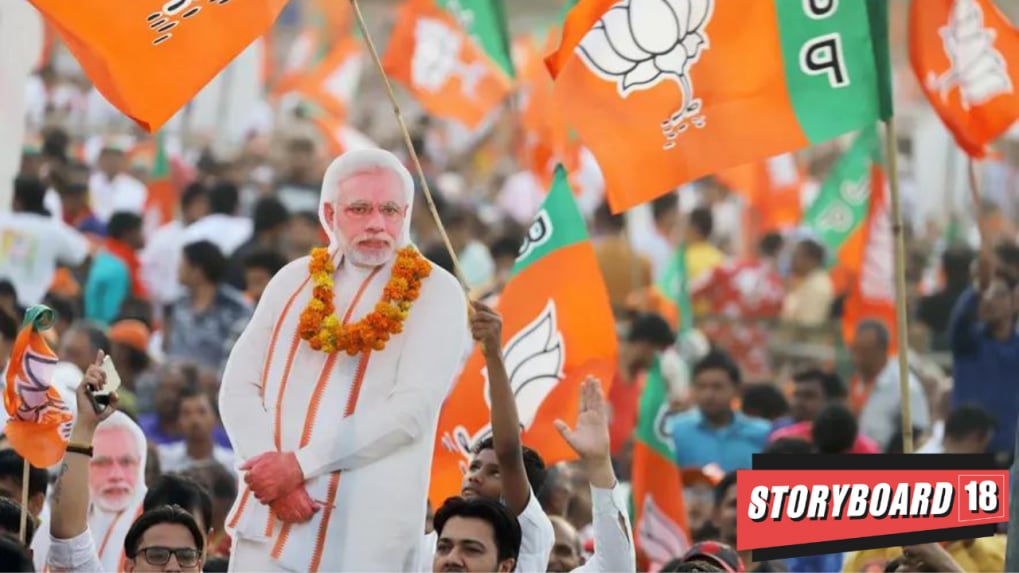BJP’s political ads hit it off with the public, six in ten say it influenced them to cast a vote
YouTube tops the list of places where people have seen an ad.
ADVERTISEMENT
Latest data from YouGov Surveys reveals that three-quarters of urban Indians (76 percent) claim they have seen some political advertisements around the 18th General election, while 14 percent have not.
Among those who have seen at least one political ad, eight in ten (81 percent) claim to have noticed Bhartiya Janta Party’s (BJP) ads. Nearly half (47 percent) have seen some ads by the Indian National Congress (INC) and only 12 percent have seen ads by the Aam Aadmi Party (AAP).

Interestingly, millennials were more likely than the other generations to say they have seen an ad by Congress (at 53 percent).
YouTube tops the list of places where people have seen a political ad (67 percent). TV is the second most common destination for viewing ads (58 percent), notably more among millennials (64 percent) and Baby Boomers (71 percent).

Instagram is the next popular place (43 percent), followed by WhatsApp (38 percent) and Meta (35 percent).
While Instagram appears to be a more common platform for political ads among GenZ (50 percent seen an ad on Instagram), Meta tends to be more popular among the millennials (42 percent millennials vs 29 percent Genz).
Not only are BJP’s ads most widely seen, a majority of urban Indians also believes that the party’s ads are the most creative (58 percent), as compared to 28 percent who think so about Congress’ ads campaigns or less than one in ten (6 percent) who feel so about AAP’s ads.
When asked which party’s ads strike a chord with the viewers, BJP came on top once again (60 percent). Less than half of this number thinks Congress’ ads resonate with the viewers (at 27 percent). For AAP the number is the smallest (5 percent).

Furthermore, six in ten urban Indians said that BJP’s ads have influenced them to cast a vote for them or changed their mind about voting for another party (61 percent). Around half of this figure said so for Congress (27 percent), and one in ten (10 percent) for AAP.
Interestingly, resonance with Congress’ ads is higher among millennials and they were more likely than the other generations to say that they have been influenced by the party’s ad campaigns to vote for them (at 37 percent).

